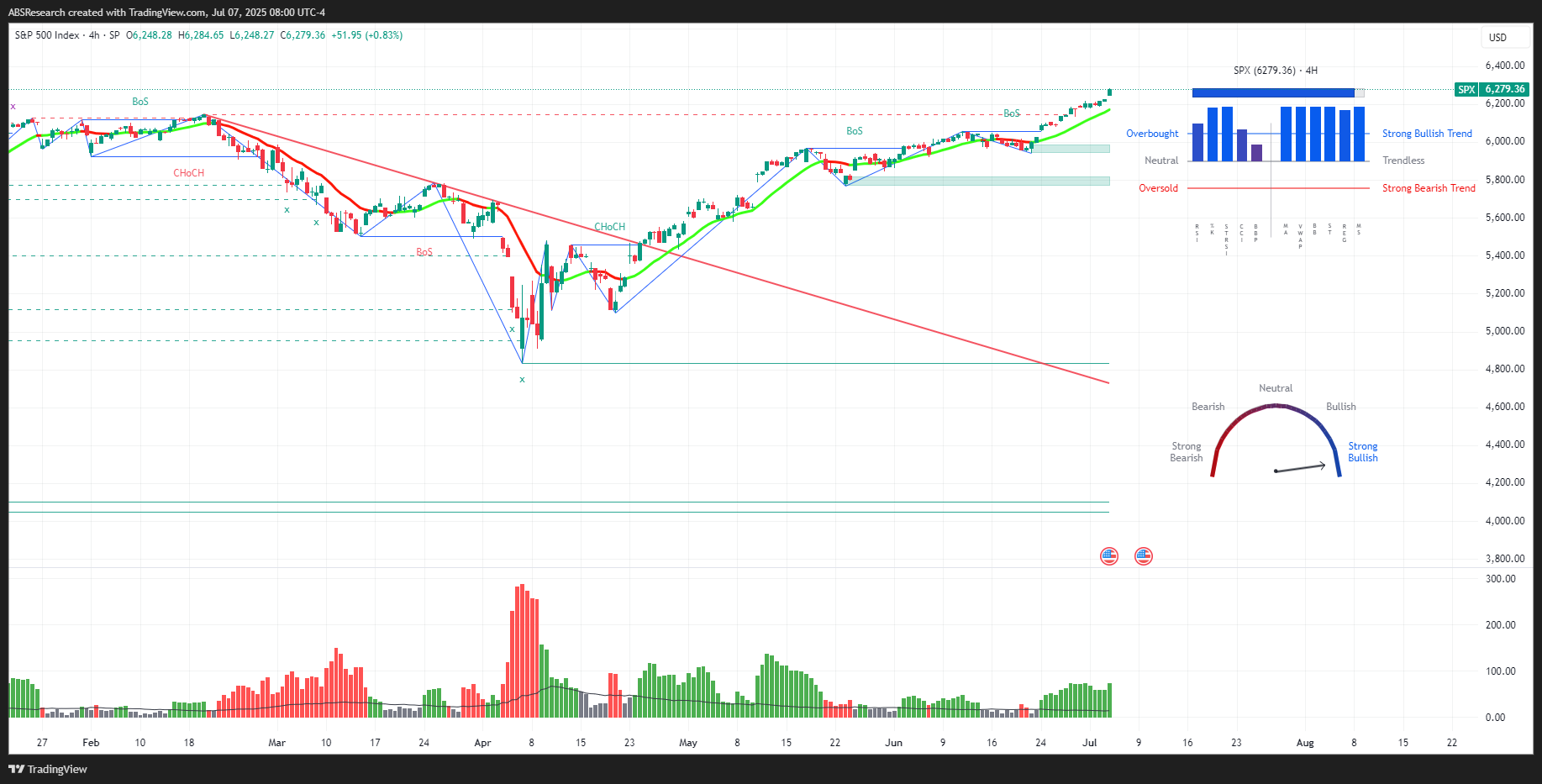Another week wrapped, and the market kept its shoulders up despite headwinds. We saw a seesaw of sentiment: upbeat jobs data on one side, tariff worries on the other. Let’s walk through what mattered, what moved, and what to expect.
Equities: Holding Ground Amid Noise
- S&P 500 ticked up slightly, finishing the week with a modest gain.
- Nasdaq followed suit, lifted by big tech resilience.
- Dow Jones eked out gains as well, though old-economy names faced trade pressures.
The mood was cautiously optimistic. Strong labor numbers suggested a resilient economy, but looming tariff deadlines kept buyers from getting too bold. Futures softened Monday as the market braced for fallout from delayed U.S. tariff policy.
Sector-wise, tech and communication services continued to attract capital, particularly the AI and cloud segments. On the flip side, utilities and real estate lagged due to rising yields. The market is tilting toward growth, but with one eye nervously watching Washington.
Bonds & Treasuries: Yields on the Move
- 30-year Treasury yields crept higher, reflecting reduced demand as investors weighed growth vs. inflation.
- 1-month T-bills surged to around 4.22%, showing near-term yield volatility.
Markets still expect the Fed to cut rates this fall, but strong job data made a July move unlikely. Bond traders are adjusting expectations accordingly. We’re in the twilight zone: soft-landing hopes, but inflation tail risks still hang around.
The yield curve remains inverted—an omen many take seriously. The 2s10s spread, in particular, is flashing yellow. Duration risk and credit spreads deserve more attention as we enter earnings season.
U.S. Market Highlights
- Federal Reserve held rates steady at 4.25–4.50%. Powell struck a hawkish tone, pointing to potential tariff-driven inflation.
- Jobs Report for June came in hot: +147,000 new jobs. Unemployment ticked up to 4.1%, but not enough to shake confidence.
- Earnings Trends were mixed. Renewable energy names stumbled early in the week on subsidy concerns but rebounded Friday.
- Fiscal Policy saw a new stimulus bill pass—good for short-term growth, but it adds long-term deficit weight.
The Fed’s next move depends on inflation data and how tariff implementation plays out. For now, Powell’s playing defense, not offense. Analysts are also watching core inflation components like shelter and services, which remain sticky.
Global Highlights
- Tariff Talk: U.S. pushed its new tariffs to August 1. China, the EU, and others haven’t fired back yet. That silence kept volatility in check.
- Europe: German and French markets traded sideways. The euro drifted slightly lower.
- Asia: Japan’s Nikkei and China’s CSI300 fell, reacting to global trade and growth concerns.
- Central Banks: Australia may cut rates soon, while New Zealand looks steady.
Emerging markets saw capital outflows early in the week, especially from Latin America. Currency volatility remains a concern in countries with heavy external debt. Meanwhile, the eurozone’s stagnation is leading some to forecast a policy pivot by the ECB by year-end.
Commodities & Crypto
- Oil (WTI) dropped to around $66 as OPEC+ boosted supply.
- Gold rallied 2% to about $3,360—a haven play with yields wobbling.
- Bitcoin hovered around $108,700.
- Ethereum settled near $2,560.
Crypto remained in a holding pattern. No major catalysts, just macro shadowboxing. However, regulatory signals from the SEC and EU are being closely watched by institutional investors, especially ahead of the fall session.
Week Ahead: What to Watch
- Fed Minutes release (Wednesday)
- CPI and PPI data (Thursday and Friday)
- U.S. Nonfarm Payrolls (July 11)
- Central bank updates from UK and China
- Earnings season warm-up from key tech and industrial names
We’ll get more clarity on inflation trends and central bank direction. That could set the tone for the rest of July. Also worth noting: options expiration next week could spark some short-term volatility.
Irving’s Insight
Back in 2011, I remember watching the market digest a double-whammy: eurozone debt crisis and U.S. debt ceiling drama. Yields jumped, equities wobbled—but you know what held firm? Quality companies with strong cash flow. Same story today. Tariffs, yields, noise—they come and go. Fundamentals endure.
Another point: when volatility is low, complacency creeps in. This is a time to review your asset allocation, not to chase performance.
“The stock market is a device for transferring money from the impatient to the patient.” — Warren Buffett
Financial Fact: Since 1928, the S&P 500 has seen an average annual return of 9.8% despite wars, recessions, and inflation shocks.
Advice: Stay balanced. Keep quality names at the core of your portfolio. Watch bond yields closely—they’re the canary in the coal mine. And whatever you do, don’t chase noise. Stay patient, stay smart.



